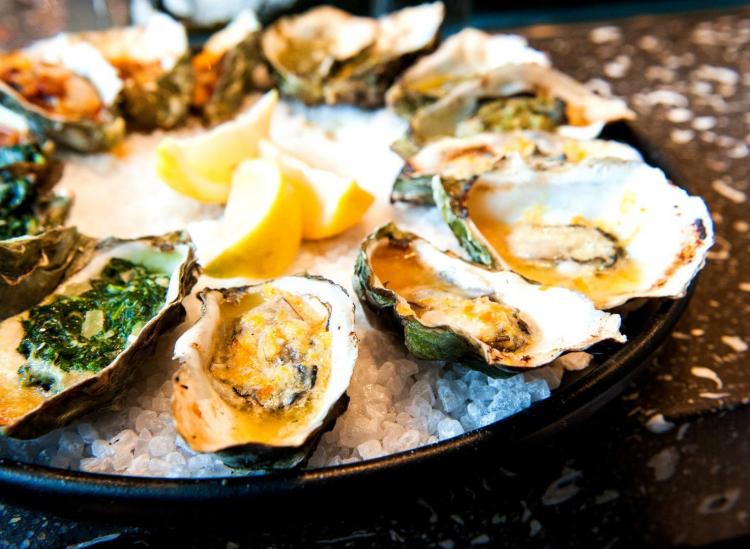4 Ways To Order Oysters When You Don’t Want Them Raw

Flickr
We all have that one friend in the group who won’t eat raw oysters. If you ask us though, wine and dollar oyster happy hours are easily one of the best things about summer. These refreshing salt-water mollusks are an aphrodisiac since they’re high in zinc, Vitamin E and have a reputation for being helpful with fertility.
There’s really no right way to eat an oyster. If you’re that person who’s a little afraid to slurp it down, there’s hope for you. Here are five ways to order oysters the next time you’re out to dinner and you can’t stomach them raw.
1. Grilled
Grilled oysters can be thought of as a beginner’s oyster dish. You still get that oceany taste, but there are a bunch of other flavors going on that can either distract you or enhance the whole experience. Grilled oysters are more common in the Gulf states like Florida, Louisiana, Mississippi and Texas, and Pacific states like California, Oregon and Washington.
Chefs will usually place the oysters straight on the grill and then dress them while they’re cooking. They could use anything from a butter and herb mixture to a barbecue sauce to a creamy sauce. You get a little bit of smokiness, a little bit of the ocean and a taste of whatever ingredients are used for the sauce.
2. Steamed
The smaller oysters are best served raw and the larger varieties, like Pacific oysters, are used for cooked recipes. When steamed oysters arrive at your table, they’re usually hot, plump, a little fluffy and airy looking. Cooking them this way keeps the moisture intact. Steamed oysters can be served in some kind of an aromatic broth, maybe with white wine, shallots, scallions and ginger. You might also see steamed oysters on a menu with a flavorful splash of spicy melted butter or smoked paprika.
3. Roasted
No matter how you’re eating oysters, they’re usually served on a bed of ice or rock salt to keep them level. You don’t want any of their “liquor” to spill out. This is the liquid inside the shell that surrounds the oyster meat. Its pure flavor is essential to the whole tasting process. When they’re shucked properly, a small pool of clear liquid will sit with the oyster in its shell. With roasted oysters, the shell is kept on while they’re in the oven with some kind of a sauce, usually something like a garlic-parsley butter.
One of the most popular styles you’ll see on a menu is called Oysters Rockefeller. This recipe calls for a mixture of garlic, spinach, watercress, green onions, butter, breadcrumbs, fennel, hot sauce, salt and pepper. The oysters are filled with a spoonful of the green mixture and cheese, and baked till they’re bubbly and golden brown. Oysters can be stuffed with all kinds of fillings and then broiled to get that golden brown goodness in about 2 minutes. Broiling oysters when there’s Romano or parmesan cheese involved is always a good idea.
4. Fried
Fried oysters are the most recognizable out of the cooked oysters since the shell is ditched. No matter how you cook them, oysters are always going to taste like the body of water they came from, but frying them is the best way to go if you’re not a seafood fan. If someone is force feeding you oysters at dinner (we can only hope for these kinds of hardships) then go for them fried. They’ll taste kind of chewy and the batter will give it a nice crunchy contrast. Chefs will usually serve them with a spicy remoulade sauce for dipping. Before frying, the oysters might be bathed in a pool of buttermilk, garlic powder and paprika and then dredged in corn meal before heading for the deep fryer. You can pop these oysters in your mouth like candy.











